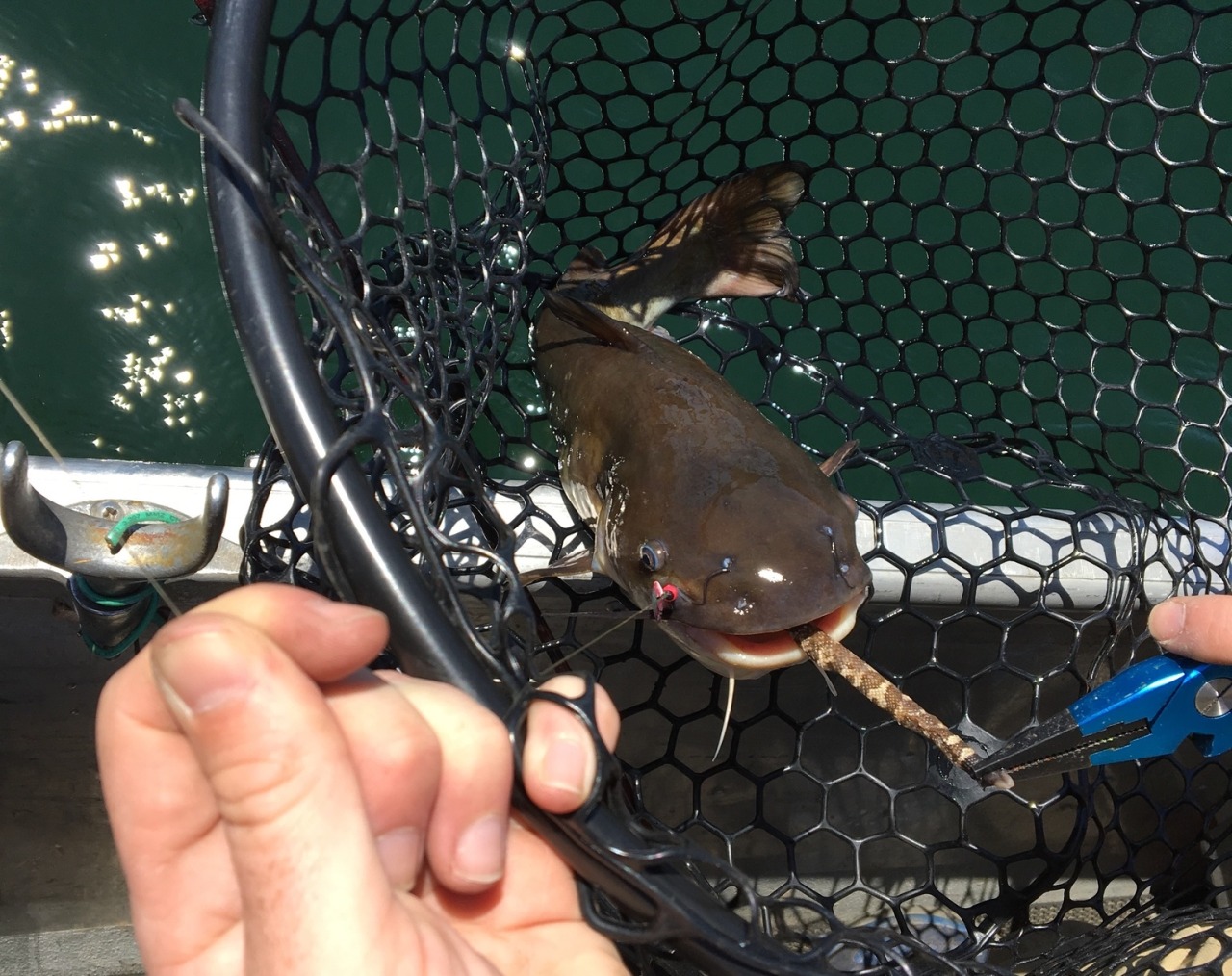Observation of the Week, 6/15/18

Our Observation of the Week is this rattlesnake-eating Brown Bullhead fish, seen in California by @phaneritic.
“I lost a 20" plus trout at the boat within the first hour and that was the last trout we'd see for the day!”
So says Ryan Hollister (@phaneritic), who was on a fishing trip with his father at California’s New Melones Reservoir. While they may have missed out on a trout, Ryan and his father later made what he calls the “Catch that Rattled the World” when they brought a Brown Bullhead, which is a type of catfish.
After laughing that I caught a ~14” Bullhead in open water I opened its mouth to remove the hook. I spied a scaly “tongue.” Upon further inspection, I realized there was a snake, oriented headfirst, in the bullhead's belly! As I turned the hook to free the catfish, the hook shot out under tension and snagged the snake. I had to remove the obviously dead and limp snake to retrieve my hook. The fish was released unharmed. We laid the snake on the boat seat only to realize that “OMG, I think it’s a rattlesnake!!”
When he got home, Ryan uploaded his photos to iNaturalist “after learning how rare of an occurrence my catch was! I wanted the world to see that the food web isn't always as linear as many think.”

Dr. David A. Steen, a herpetologist who does a ton of great outreach (check out his Twitter feed), came across Ryan’s photos on Twitter and told me that when fish prey on snakes, they often go for aquatic snakes like Nerodia and not rattlesnakes “largely because this kind of rattlesnake generally sticks to terrestrial habitats and fish…well, don’t.” He of course doesn’t know exactly how this specific predation event happened, but told me he suspects “the rattlesnake was crawling along the shoreline or perhaps took a brief dip near land when it was consumed. This type of catfish...had never been documented eating a Western Rattlesnake before.” He worked with Ryan on making a short note about the encounter and hope to have it published.
Likely the major reason Brown Bullheads haven’t been seen eating a Western Rattlesnake before is because the fish themselves are native to the eastern parts of North America, although they have been introduced as stock for recreation and food in many other parts of the continent, including California. An opportunistic feeder, this species is considered to have a detrimental impact on native fish in areas where it has been introduced.
Western Rattlesnakes, of course, are native to the area and actually range throughout much of western North America, from Canada through Mexico. As Dr. Steen noted, they tend to prefer dry habitats, but will come to the water at times. Like other rattlesnakes they are not aggressive but their bites are considered to be medically significant to humans. Contrary to Ryan’s observation, the usual predators are raptors, mammals, and other snakes such as the California King Snake.

While Ryan (above, with his family) was outdoors with his father on that day, he more often spends times in nature with his students. A geoscience and AP Environmental Science teacher at Turlock High School, he runs a nature club with the school and the group has “gone on day hikes into the Stanislaus National Forest, Yosemite, and Coast Range,
and they perform lots of amazing stewardship tasks for our local San Luis National Wildlife Refuge. In October, twelve students get to participate on a 6-day backpacking trip in Yosemite's wilderness thanks to NatureBridge and the WildLink Program (for which our club is named). The best part is, the majority of our students come from diverse and underrepresented backgrounds. They are going to be change agents in their community and stewards for their environment.
Ryan has only five observations on iNaturalist, but says that it’s become invaluable for him now that he has a five year-old son.
Now I can post and get help identifying less common critters and plants that stump my wife and I when our son asks "What's that?" while on our hikes and adventures. The community has been really great in coming to our aid.
- by Tony Iwane
- Ryan uses to take his students on virtual field trips when they don’t have to funds for an actual excursion. Check out Earth magazine’s article about it - very cool!
- Western Rattlesnakes may not be big swimmers, but I did manage to find one at the edge of creek, wanting to get a drink. One of my favorite nature encounters.





Comments
It wouldn't be the case in June but i've heard stories of surfers encountering rattlesnakes in the ocean after flash floods in southern California where they get washed into the ocean. They may not like water but once in there they swim just fine from what i hear
Add a Comment